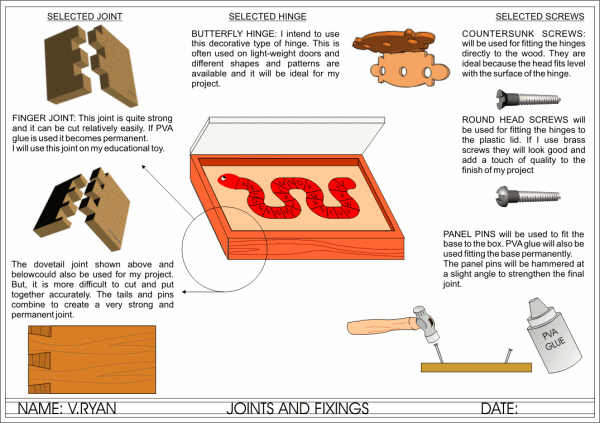| CLICK HERE FOR INDEX PAGE | |
| DEVELOPMENT SECTION - JOINTS AND FIXINGS | |
| V. Ryan © 2010 | |
|
In the research section of your project you may have already considered a range of joints and fixings. This was probably generalised research. However, in the development section of the project you must decide exactly how you intend to join all the various parts together. You will need to select the joints and fittings carefully. |
|
|
|
|
|
The sheet shown below shows an educational toy. The toy will be made using traditional craft skills as well as a range of materials including modern materials such as perspex.
|
|
|
|
|
 |
|
|
SUGGESTIONS: |
|
| CLICK HERE FOR MORE SAMPLE JOINT DEVELOPMENT SHEETS | |
| FURTHER EXAMPLE OF A JOINTS DEVELOPMENT SHEET | |
| CLICK HERE FOR DESIGN PROCESS INDEX PAGE | |